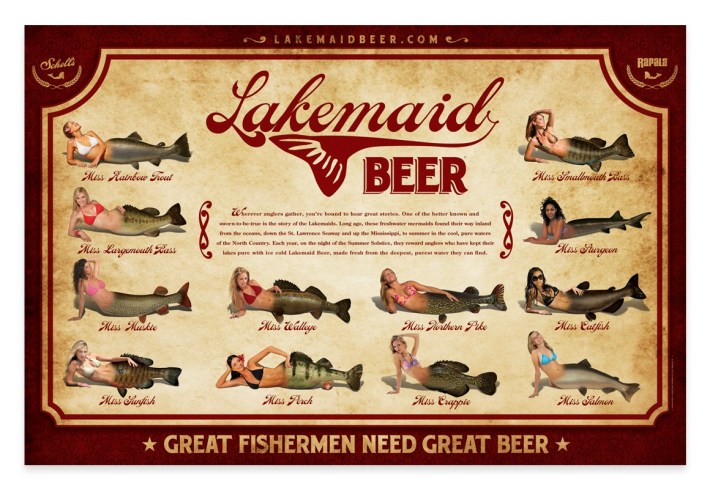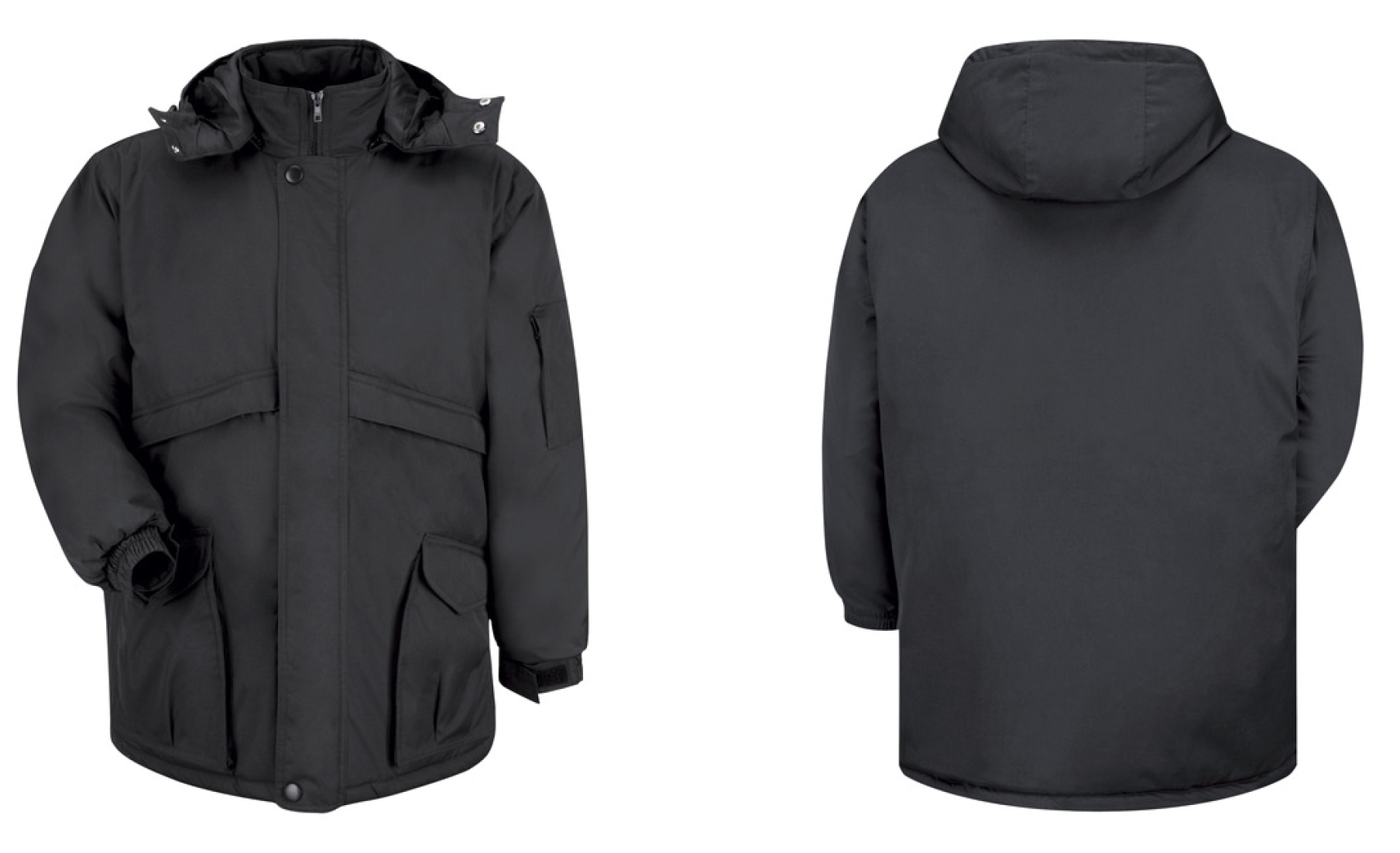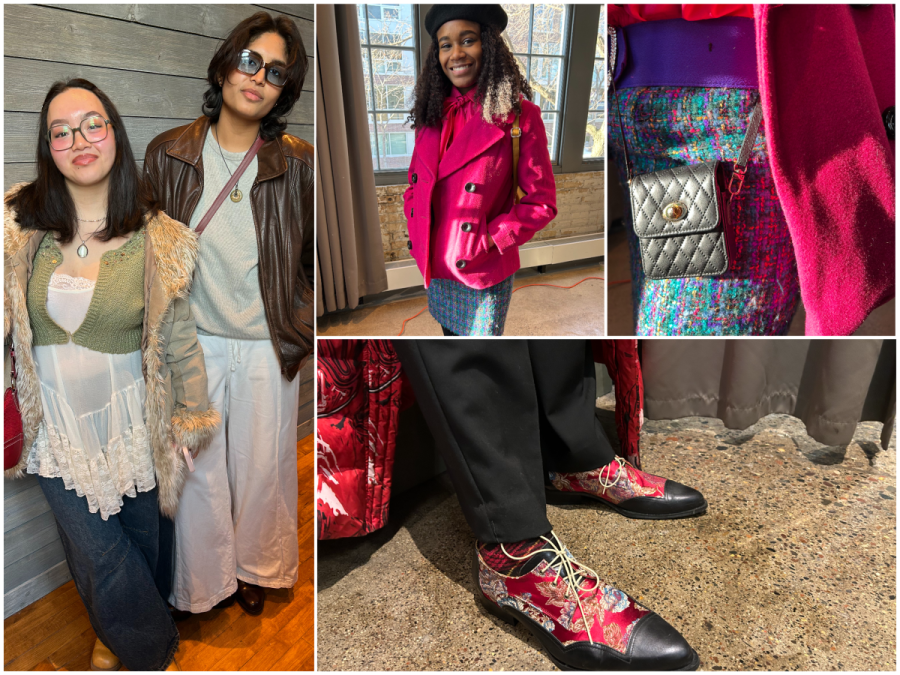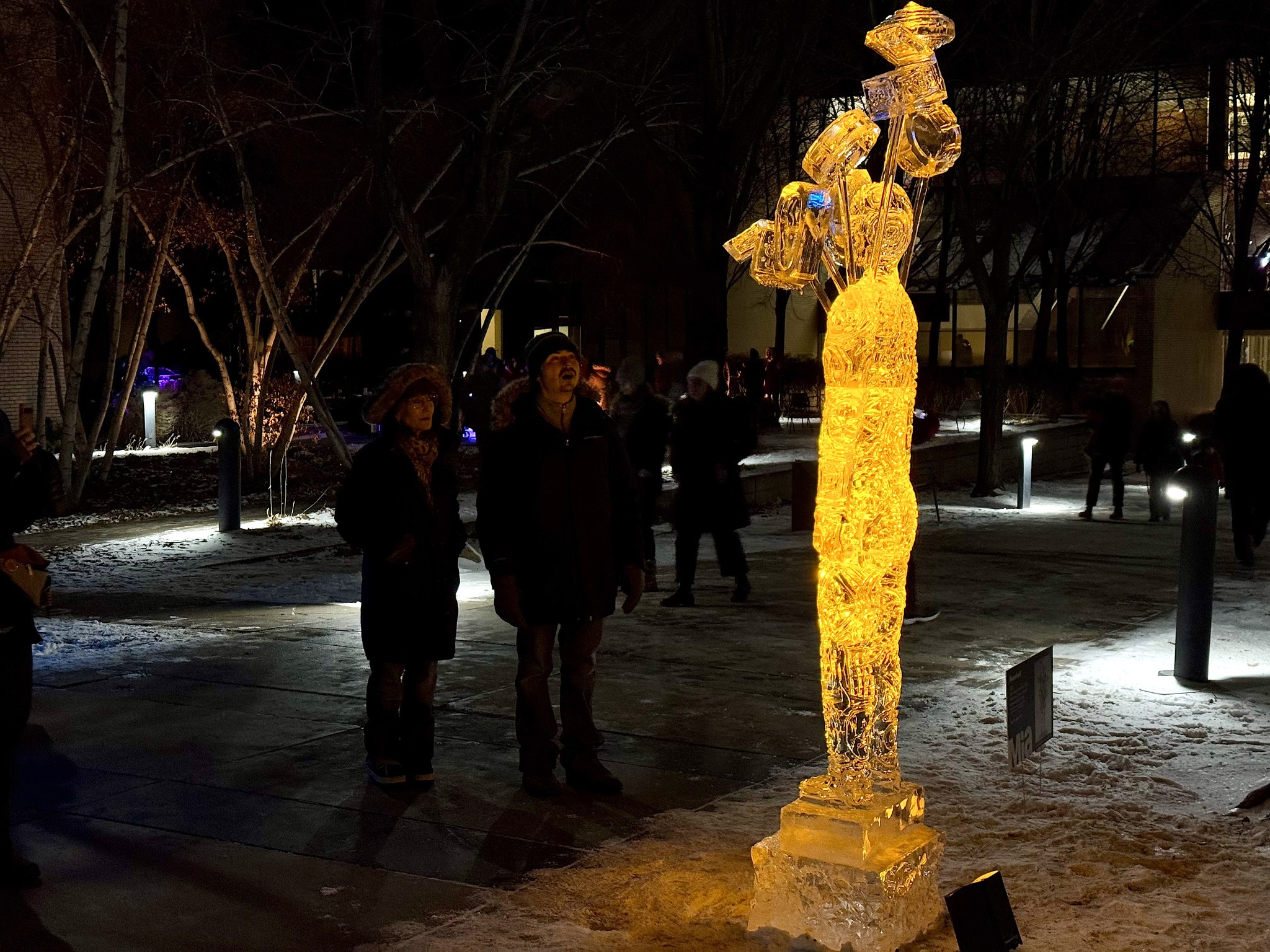Macro giant Budweiser has its majestic Clydesdales, Minnesota-launched Hamm’s has its beloved, boozy-eyed bear. Bud Light, for a time, had Spuds MacKenzie, its party animal bull terrier whose appetites spanned brews to, apparently, human women.
But here in Minnesota, where craft breweries don’t have the need or budgets for ambitious marketing, beers mostly sell themselves. In 2008, however, a team of Minneapolis admen hatched a plan for the reverse approach: A high-concept campaign to sell beer with original folklore, a universe of characters, interspecies sex appeal, and a proprietary bottle cap game.
Lakemaid Beer—“The Fisherman's Lager”—would last a remarkable 12 years. Featuring a unique, smiling freshwater mermaid on each bottle, the brand would earn a loyal North Woods fanbase, do battle with the Federal Aviation Administration, and, despite its origins as a fishing lure marketing device, even win over craft-beer aficionados.
“I bought my first pack as a joke, but I went back and bought a couple more because it’s actually a decent beer,” says Doug Hoverson, author of Land of Amber Waters: The History of Brewing in Minnesota. “Lakemaid brought customers into the joke, rather than playing it on them. It brought more people into the world of craft beer.”
'Why Aren't There Freshwater Mermaids?'
During the late ’00s, that question bubbled inside the Minneapolis office of ad firm Pocket Hercules. Partners Jack Supple, Jason Smith, and Tom Camp riffed on it while concocting campaigns for Rapala, the Finnish fishing lure company famous for its towering billboard puns.
“We were working on Rapala, and we kept joking about: Why aren’t there freshwater mermaids?” Supple says. “There are bazillions of saltwater ones.” (Scottish folklore includes the ceasg, a beautiful woman with the body of a freshwater salmon, but his point is still well-received.)
Eventually, the Pocket Hercules team devised a brand-new beer concept, one intended to challenge the market share of go-to cabin and icehouse standbys like Old Style, Hamm’s, and perhaps the ultimate Minnesota beer, Mich Golden Light. The visual elements of Lakemaid Beer would jump out to buyers with the force of a flying Asian carp: 12 sultry, bikini-clad models (semi-hastily) photoshopped onto the bodies of 12 North American gamefish. The ad firm’s copywriters would get to flex their chops, creating an entire backstory and individual biographies for the Lakemaids.
Here’s the lore, per the still-active Lakemaid website:
“Wherever anglers gather, you’re bound to hear great stories. One of the better known and sworn-to-be-true is the story of the Lakemaids. Long ago, these freshwater mermaids found their way inland from the oceans, down the St. Lawrence Seaway and up the Mississippi, to summer in the cool, pure waters of the North Country. Each year, on the night of the Summer Solstice, they reward anglers who have kept their lakes pure, with ice cold Lakemaid Beer, made fresh from the deepest, purest water they can find.”

The extent to which the bios for Miss Walleye, Miss Largemouth Bass, Miss Muskie, and the rest wink at the notion of romancing the Lakemaids? We’ll leave that up to you, but the copy associated with Miss Walleye isn’t exactly as subtle as the fish’s “pure white flesh.” Ditto for the description of Miss Salmon, who’s known for “breaking rods, reels, and the hearts of lesser fishermen.”
“In 2008, craft beer was really trying to figure out what it was and who it was for, and often the answer to that question was straight white dudes,” says Racket beer columnist Jerard Fagerberg. “I had no idea [Lakemaid] existed, but I can't say I'm surprised something so goofy and misogynistic came out of craft beer's nascent days.”
Supple doesn’t see it that way, saying he only encountered a single woman who was ever offended by Lakemaid’s roster of freshwater beauties. “They’re mermaids; women think mermaids are cool, especially angler women—it was done to be fun for the North Woods angler,” he says with a chuckle. Only “four or five” of the Lakemaids are models hired by the agency; the others are stock models who may or may not be aware of their strange place in Minnesota brewing history.
The notion of an ad firm pivoting to in-house brand production recalls that same bygone era. Recently retired Star Tribune reporter John Reinan spent years in the marketing world, and he wrote about Lakemaid in 2011 for MinnPost.
“There was a real trend of agencies that were trying to create their own products, really as a profit center,” he says, adding that his old firm, Fast Horse, attempted to launch a website devoted to mid-century modern products. “The additional benefit was they could showcase their creativity for their own brand.”
First, Pocket Hercules had a considerable hurdle to clear: Mastering the logistics of becoming a small fish in an entirely different industry.
Schell's Game
Supple knew the Lakemaid demographic wouldn’t want to be challenged by “fussy” beers like hazy IPAs and barrel-aged stouts: “We wanted to throw it right over the plate,” he says.
To do so, Pocket Hercules traveled down to New Ulm, Minnesota, to enlist the expertise of Schell's Brewing. Fifth-generation owner Ted Marti and brewmaster Dave Berg were happy to add Lakemaid as a contract client. The partnership meant extra cash for Schell's, and plug ‘n’ play brewing infrastructure plus eight-state distribution for the startup beer.
“I don’t know if they necessarily knew what kind of beer they wanted,” Berg says, noting that this was his first crack at making a beer based on a marketing angle. “But it was gonna be, ya know, mermaids. Well, it was mermaids but they were fish: Miss Crappie, Miss Pike…I wanna say I met Miss Walleye…”
At the time, Berg was toying with a production style known as first-wort hopping, which boosts hop flavor while maintaining a smoother bitterness.
“I was laughing because Lakemaid was probably going to be the first American lager that ever used first-wort hops,” he remembers. “So real innovation there.”
Lakemaid went beyond sneaky beer-nerd innovation. The bottom side of each cap featured 50+ fishing-themed icons, numbers, or commands—the bottle cap game. The idea was to give bargoers, the cabin crowd, and ice fisherman a novel way to pass the time, and even pick up a few bucks if wagering was involved.

In terms of packaging novelties, Lakemaid followed in the footsteps of Schmidt Brewing, according to Minnesota beer historian Doug Hoverson. That St. Paul brewery popularized the Big Mouth Bottle in the ’70s, a design quirk that required drinkers to rip a metal pull tab seal off the top of its large, large mouth. “That was pretty much a recipe for sliced open fingers or mouths… I guess you got the beer out of the bottle faster,” Hoverson says. The historic G.O.A.T. of gimmicks, however, is Cold Spring Brewing Co., who would reportedly rarely turn down a contract gig.
“They were one of the four breweries that made Billy Beer,” Hoverson says of the notorious brew manufactured by Jimmy Carter’s black-sheep brother, Billy. “My favorite of theirs is probably Elvira, Mistress of the Dark beer. Obviously anyone with even a tiny bit of fame needs to have a beer.”
Baited with free samples and posters of the mermaids, Lakemaid launched at the ’08 Northwest Sportsman Show. It became an instant niche hit, Supple says, and by the early ’10s was selling 50,000 cases during its seasonal summertime run. Operations would soon expand with another seasonal release, the Frosty Winter Lager, which led to the brand’s biggest exposure.
The Big Game, the Slow Decline
By 2014, it became clear to Pocket Hercules that Lakemaid would never be a cash cow. The ballooning costs associated with contract brewing were considerable, and eventually, once Schell’s ran out of space, production shifted to Stevens Point Brewery in Wisconsin. “We would get a few dollars here and there, but we wouldn’t have gotten on Shark Tank,” Supple says.
But the admen intended to squeeze one last bit of marketing magic out of their beer brand. Supple knew Lake Waconia and Lake Mille Lacs would be packed with ice fishermen ahead of Super Bowl XLVIII, primetime for the ad industry. A year earlier, in 2013, Amazon had made headlines across the world when it announced the impending arrival of delivery drones. Supple knew what his team had to do: Load a $15,000 DJI-S800 drone with Lakemaids and zip ‘em across the sky to thirsty ice shacks. The stunt worked, attracting over 800,000 YouTube views that Lakemaid parlayed into TV spots on Fox News and The Today Show.
The FAA was displeased. The agency sent Supple an 87-page document outlining how commercial drone distribution is prohibited. Supple was undeterred, telling the Stevens Point Journal: "We're going to continue to set up drone ports throughout the Upper Midwest with some of our best retailers who are on lake shores."
“It caused an uproar among beer drinkers,” the co-founder reflects today. “Crazy and fun time!”
As production costs rose and fighting for shelfspace grew more intense, Pocket Hercules pulled the plug on Lakemaid in May 2020, just a couple months into the pandemic. Never mind the fact they had a major ad agency to run, Supple says.
“It was obviously incredibly tongue-in-cheek; they carried the conceit of the pin-up freshwater mermaid just far enough that it was kind of funny,” Hoverson observes. “I think it’s a really good example of how you can tie a marketing campaign to something that people aren't really sure about. But if it wasn’t a good beer nobody would have bought it twice.”
And after a dozen years on the market, Lakemaid forged connections that run as deep as lake trout, according to Supple. Or at least as deep as Miss Rainbow Trout.
“It’s a cult thing, people are sad it’s gone,” he says. "I think we’ll probably find a way to work with someone to get it back up. I don’t think our fans are going to go away.”







